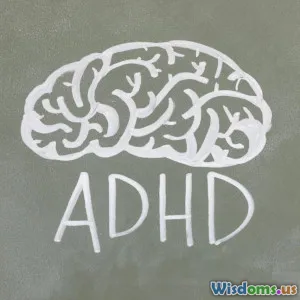
Why More Schools Are Embracing ProjectBased Learning
8 min read Explore why project-based learning is transforming modern education and how schools benefit from this hands-on approach. (0 Reviews)
Why More Schools Are Embracing Project-Based Learning
Education is evolving - and at its forefront lies Project-Based Learning (PBL), an educational approach that’s flipping traditional teaching on its head. But why exactly is PBL gaining so much traction in schools worldwide? As students, educators, and policymakers alike reconsider the best methods for preparing learners for the complexities of the 21st century, PBL offers powerful answers.
Introduction: Questioning Traditional Learning
Think back to your typical classroom experience: a teacher lecturing from the front, students passively taking notes, and testing focused on memorization rather than application. While this lecture-centered method has dominated for decades, experts argue it falls short in cultivating essential skills such as creativity, critical thinking, collaboration, and real-world problem-solving.
The shift toward Project-Based Learning represents a fundamental change, but it’s more than just a teaching technique; it’s a philosophy. This approach immerses students in projects that require active investigation and problem-solving, replicating challenges they might face outside the classroom. As the global workforce demands adaptable, innovative thinkers, PBL is gaining attention as a way to meet these demands head-on.
What Is Project-Based Learning?
At its core, Project-Based Learning is an instructional approach where students gain knowledge and skills by actively exploring complex questions, problems, or challenges over an extended period. Unlike traditional lessons centered around lectures and isolated skills, PBL integrates multiple disciplines and encourages students to:
- Collaborate in teams
- Conduct research
- Analyze and synthesize information
- Create tangible products or presentations
For example, a middle school class might undertake a project requiring them to design an environmentally friendly community park. This would incorporate science (ecology, sustainability), math (budgeting, measurements), and social studies (urban planning, community impact), leading to a comprehensive learning experience.
The Push Behind PBL Adoption
1. Enhancing Engagement and Motivation
One of the biggest critiques of conventional schooling is student disengagement. PBL reverses this trend by making learning relevant and exciting. Research published by the Buck Institute for Education shows students involved in PBL report higher motivation and commitment to their work because they see the real-world relevance.
A good example is High Tech High in San Diego. The school’s project-based curriculum has led to remarkable student enthusiasm and a graduation rate well above the state average.
2. Developing Essential 21st Century Skills
Employers consistently voice concern over graduates’ lack of soft skills. The World Economic Forum highlights critical thinking, problem-solving, and collaboration as top skills for the future workforce. PBL naturally nurtures these abilities, as students must ideate, communicate, and adjust their approaches dynamically.
Stanford University’s d.school supports training teachers to craft projects that sharpen these competencies, with evidence showing students improve not only academically but also in leadership and resilience.
3. Improving Academic Outcomes
Concerns sometimes arise about whether PBL compromises traditional learning standards. However, multiple studies have demonstrated that PBL can improve academic achievement when implemented effectively.
For instance, a 2014 study in the Journal of Research on Educational Effectiveness found that students in PBL classrooms outperformed control groups in math and science tests. The reason? PBL connects abstract concepts to real applications, deepening understanding and retention.
4. Catering to Diverse Learning Styles
Schools are increasingly aware that a one-size-fits-all model doesn’t serve the diversity in classrooms. PBL offers a flexible framework allowing visual, auditory, kinesthetic, and interpersonal learners to thrive.
Case in point: New Tech Network schools have reported that their project-based curricula help English Language Learners and students with special needs by providing multiple ways to demonstrate mastery beyond traditional tests.
Challenges and How Schools Overcome Them
Despite its benefits, PBL adoption has hurdles:
- Teacher training: Not all educators feel prepared to design and facilitate meaningful projects.
- Assessment: Measuring learning in PBL contexts requires more nuanced evaluation than standard tests.
- Resources: Projects can demand materials, technology, and time that some schools lack.
Successful schools address these by investing in professional development, creating robust rubrics aligned with standards, and fostering community partnerships for resources. For example, PBLWorks offers comprehensive training programs to support teachers transitioning to this methodology.
Real-World Examples and Insights
The Michael and Susan Dell Foundation
They have funded initiatives in urban schools to promote PBL, linking classroom projects with community needs. One project involved students designing mobile apps to solve local transportation issues, bridging academic learning with civic engagement.
Finland’s Inquiry-Based Approach
Finland’s education system incorporates elements of PBL and inquiry-based learning. Their consistently high rankings in global education assessments demonstrate that students excel when learning is student-centered and experiential.
Conclusion: The Future is Project-Based
The growing adoption of Project-Based Learning is a powerful response to the demands of the modern world. By fostering deeper engagement, honing pivotal skills, and improving academic outcomes, PBL paves the way for more meaningful, effective education.
As more schools embrace this approach, supported by research, community involvement, and educator training, education is poised to prepare learners not just to pass tests, but to thrive in complex, dynamic environments.
Whether you’re an educator, parent, or policymaker, understanding and advocating for PBL can help transform learning into an exciting journey rather than a routine. The evidence is compelling: project-based learning isn’t just a trend; it’s a transformative step towards educating the next generation of innovators and leaders.
References:
- Thomas, J.W. (2000). A Review of Research on Project-Based Learning. The Autodesk Foundation.
- Condliffe, B. et al. (2017). Project-Based Learning: A Literature Review. MDRC.
- Buck Institute for Education Research.
- World Economic Forum (2020). The Future of Jobs Report.
- Journal of Research on Educational Effectiveness (2014). Impact of Project-Based Learning on Academic Achievement.
- PBLWorks Teacher Training Resources.
Rate the Post
User Reviews
Popular Posts





















